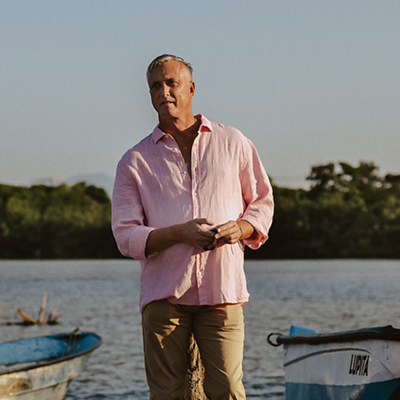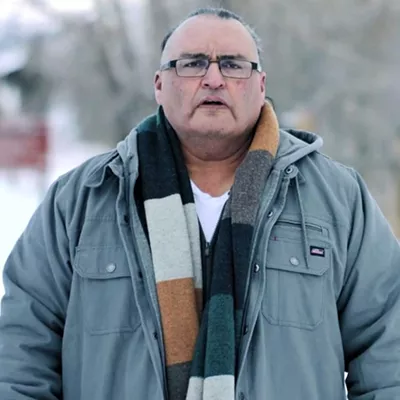Gowin has been taking aerial photographs of battered landscapes for more than 20 years and Changing the Earth is his first major exhibition to tour in more than a decade. What's on view at CCP is not easy to digest: images of military test sites and toxic water treatment facilities; degradation of the earth due to mining operations and off-road motor traffic; golf courses under construction that look like brain surgery in progress.
Their silence is palpable. There's no roar of the airplane as Gowin aims his camera over uninhabitable terrain. His challenge is to decipher what he sees into a familiar vocabulary for his viewers, to find its inherent beauty.
This is the challenge, too, for Terry Tempest Williams--a writer bearing witness to the trammeled land. In more than a dozen books, including nonfiction, poetry, essays and fiction, Williams has focused on the passion, the patience and the testimony of the desert and our country's beleaguered and gorgeous West.
"For me, the challenge is how to translate that into words," explains Williams from her home near Moab, Utah. "But I can't write without the visual, whether it's a 15th-century painting or Gowin's images of a Nevada test site or the reality of Red Rock."
Williams' words are ideal for Gowin's images. Her catalog essay, The Earth Stares Back, meanders through the emotional power of Gowin's photographs and her own experiences of living in the shadow of nuclear destruction.
"Yesterday, I spent eight hours with my brother who's going through chemotherapy for lymphoma. Half my family has been afflicted with cancer. Three of our neighbors have died of this disease--young people in their mid-40s. The national average for lymphoma is seven out of 100,000. How can this not be tied to the poisoning of the land?"
Williams wonders about the toxins that have rained down on the entire West. Like Barbara Kingsolver, Ellen Meloy or Charles Bowden, her writing is braided by the destruction of the land on which she lives. It was her 1991 book, Refuge: An Unnatural History of Family and Place, about the twin devastations of uranium mining in Utah and her own mother's struggle with cancer, that brought the writer into contact with Emmet Gowin.
"Shortly after it was published, I received a beautiful letter from him out of the blue. He sensed our shared vision. When we finally met and Emmet showed me his photos, we just sat on a couch, weeping."
She adds, "Emmet is a holy man. He has an artist's eye, but also a prophet's eye, rooted in darkness. So many of his photos register as images of the body, of wounds, of malignancy. It's ironic that the very chemicals that cause diseases of the body, are the very compounds that cure cancer. Radiation is a harsh paradox we live with."
The West has not suffered an isolated malignancy, Williams notes.
"We're all bound by the wind. If you look at the jet stream during the time of greatest nuclear testing, the largest deposits of radiation are in upstate New York."
Williams' writing is trained on beauty and desolation. She's traveled the ground where Gowin, high overhead, has snapped his gorgeous, dystopic images.
"I walked for two hours into the test site before being arrested. It's a haunting place, one of the most profaned and most profound. When I took my niece there for the 50th anniversary of the Hiroshima/Nagasaki bombings in '95, it was like a pilgrimage."
Williams catalog essay for Gowin's images stands as a stark reminder of translation--from visuals to words and back again.
"I took my cue for writing the essay from Rainer Maria Rilke's words about beauty being the beginning of terror. The paradox is held in our own bodies. Gowin's work is about reverence for life, not destruction."
Williams also took another cue. Affected so profoundly by Gowin's images, she sent them on a mini-road trip through Castle Valley, her remote outpost in the red rock desert of southern Utah. She shared them with her neighbors--a former corporate consultant for Boeing, a once-active lawyer for Mobil Oil, a couple who work as activists for water and the land, a Mormon housewife.
"His work cuts through class, gender, race and spiritual affiliation to what it means to be human. He turns shadow into transient beauty."
Williams notes that the present Bush administration has, ironically, stomped on Bush Sr.'s 1992 moratorium to end nuclear testing in the West. Escalating militarism vies with a bigger problem of where to store the nuclear industry's dangerous residue. How does Williams live amidst such destruction?
"Despair shows us the limits of our own imagination. Once imagination is shared, it creates collaboration, communication and then social change. And then, hope."
At 5:30 p.m. Friday, Dec. 5, writer Terry Tempest Williams shares her words in response to photographer Emmet Gowin's, Changing the Earth, on view at the Center for Creative Photography, located in the fine arts complex at Speedway Boulevard and Park Avenue. She reads with Richard Shelton, whose poetry and prose of the Sonoran Desert meditate upon relationships with the land.
The reading is free as is admission to the CCP. Gallery hours are 9 a.m. to 5 p.m. Monday to Friday and noon to 5 p.m. on weekends. The show continues through Jan. 3.
For details, call 621-7968.
--Joan Schuman







